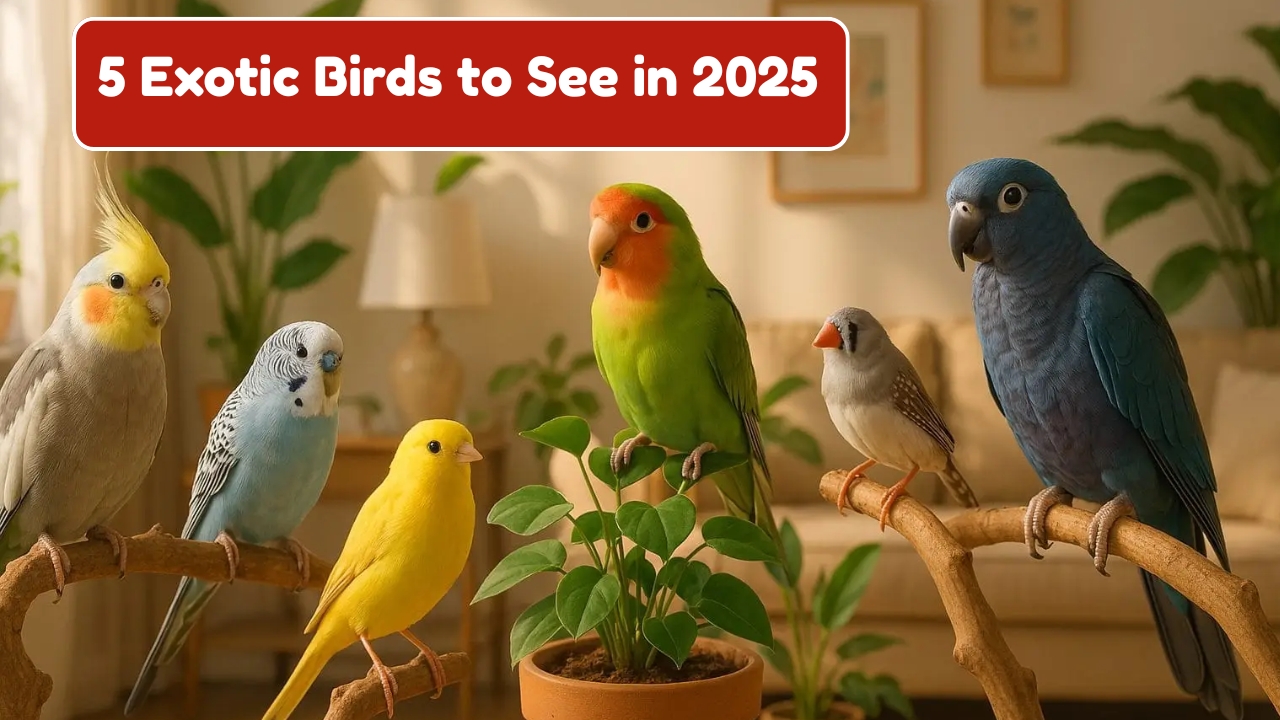Exotic birds, with their vibrant colours, intricate patterns, and extraordinary behaviours, have fascinated humans for centuries. These avian marvels not only add colour to the skies but also play vital roles in their ecosystems.
Across the globe, particular species stand out for their unique beauty and captivating characteristics, often symbolising freedom, mystery, and the grandeur of nature.
This article explores five exotic birds that will truly take your breath away, highlighting their distinctive features, habitats, and the importance of their conservation.
Resplendent Quetzal: The Jewel of Central America
The Resplendent Quetzal (Pharomachrus mocinno) is arguably one of the most stunning birds worldwide, native to the cloud forests of Central America, including Guatemala, Costa Rica, and Panama.
Sporting iridescent green and red plumage, the male is renowned for its remarkable long tail feathers that trail far beyond its body, creating an ethereal appearance.
This bird holds cultural significance as the national bird of Guatemala and was revered by pre-Columbian civilizations as a symbol of liberty. Measuring about 36cm in body length with an extension of over a metre from its tail feathers, the quetzal is elusive, often found in dense, misty forests.
The quetzal primarily feeds on fruits, particularly wild avocados, playing a critical role in seed dispersal and forest regeneration. Its conservation is vital as habitat loss threatens its populations, categorising it as Near Threatened on the IUCN Red List.
Wilson’s Bird-of-Paradise: A Spectacle of Colours and Dance
Wilson’s Bird-of-Paradise (Cicinnurus respublica) is a vibrant, small bird endemic to Indonesia’s Waigeo and Batanta islands. The male dazzles with a kaleidoscope of bright blue, red, yellow, and green feathers, a unique crest, and a remarkable courtship dance to woo females.
Measuring about 15cm, this bird’s playful and intricate mating displays are a highlight for birdwatchers and researchers alike. Its diet mainly consists of fruits and small insects, contributing to the ecological balance through pest control and seed dispersion.
Although currently not under severe threat, habitat disruption due to deforestation poses ongoing risks. Protecting the islands’ forest habitats is critical to preserving this avian gem.
Harpy Eagle: The Majestic Raptor of the Americas
The Harpy Eagle (Harpia harpyja) stands as one of the most powerful and awe-inspiring raptors inhabiting the rainforests of Central and South America.
With a wingspan reaching two meters and a muscular body weighing up to 9kg in females, the harpy eagle commands respect and fascination.
Recognisable by its striking crest and formidable talons, this apex predator preys on monkeys, sloths, and other medium-sized animals, playing a key role in maintaining forest health by controlling prey populations.
Classified as Near Threatened predominantly due to habitat destruction, conservation efforts focus on preserving its rainforest environment and mitigating human-wildlife conflicts.
Mandarin Duck: A Splash of Elegance
Native to East Asia, the Mandarin Duck (Aix galericulata) is celebrated for its vibrant plumage, especially the male’s spectacular orange “sails” and iridescent greens and blues. Small in size, about 40cm long, this waterfowl frequents rivers, lakes, and wooded ponds.
Its striking appearance has made it a popular motif in art and culture, symbolising fidelity and love due to its monogamous pairs. The Mandarin Duck feeds on seeds, plants, and small aquatic creatures, contributing to aquatic ecosystem balance.
Due to habitat loss, its population is stable but carefully monitored, with efforts in some regions to preserve wetland habitats essential for its survival.
Resplendent Firetail: Australia’s Vibrant Finches
The Resplendent Firetail (Stagonopleura bella) is a small finch indigenous to Australia, admired for its bright red rump, contrasted with black and white markings on its face and body. Measuring approximately 13cm, this bird inhabits forest margins and scrublands.
Known for their melodious calls and social flocking behaviour, these finches play important roles in seed dispersal and habitat maintenance. Though not endangered, habitat conservation ensures their continued presence in the Australian bush.
Ecological Significance and Conservation
These exotic birds are not merely visual delights; they carry immense ecological value:
- Seed Dispersers: Many feed on fruits, aiding forest regeneration.
- Pest Regulators: Insectivorous species control insect populations.
- Indicators: Their presence or absence signals ecosystem health.
- Cultural Importance: Many species inspire art, folklore, and national symbols.
Protecting their habitats from deforestation, pollution, and climate change is critical for biodiversity preservation. International cooperation, protected areas, and community awareness programs contribute significantly to conserving these treasured species.
Comparison Table of Exotic Birds
| Bird Species | Region | Size | Key Features | Conservation Status |
| Resplendent Quetzal | Central America | 36cm + long tail | Iridescent green plumage, long tail | Near Threatened |
| Wilson’s Bird-of-Paradise | Indonesia (Waigeo) | 15cm | Multicolour plumage, elaborate courtship | Least Concern |
| Harpy Eagle | Central & South America | Up to 2m wingspan | Large raptor, powerful talons | Near Threatened |
| Mandarin Duck | East Asia | 40cm | Brilliant male plumage, aquatic habitats | Least Concern |
| Resplendent Firetail | Australia | 13cm | Red rump, melodious calls | Least Concern |
Conclusion
The majesty and diversity of exotic birds offer endless fascination and an urgent call for conservation.
The Resplendent Quetzal’s ethereal beauty, the flamboyant displays of Wilson’s Bird-of-Paradise, the commanding presence of the Harpy Eagle, the elegant Mandarin Duck, and the cheerful Resplendent Firetail collectively showcase nature’s artistry.
Encountering these birds in their natural habitat is a privilege that underscores the importance of preserving their environments.
Through continued efforts in habitat protection, responsible ecotourism, and awareness, these exotic avian treasures will continue to inspire and enrich generations to come.
Frequently Asked Questions (FAQs)
1. Which exotic bird is considered the most colourful?
Wilson’s Bird-of-Paradise is renowned for its dazzling mix of vibrant colours during courtship displays.
2. Are Harpy Eagles the largest eagles in the world?
Yes, Harpy Eagles are among the largest and most powerful eagles, with impressive wing spans and hunting capabilities.
3. Where can Mandarin Ducks be spotted outside Asia?
Mandarin Ducks have been introduced in parts of Europe and North America, often seen in parks and preserves.
4. How do exotic birds like the Resplendent Quetzal contribute to their ecosystems?
They act as key seed dispersers, facilitating forest regeneration and maintaining ecological balance.
5. What are the biggest threats to these exotic birds?
Habitat loss, deforestation, climate change, and poaching are the primary threats; conservation is critical to their survival.












